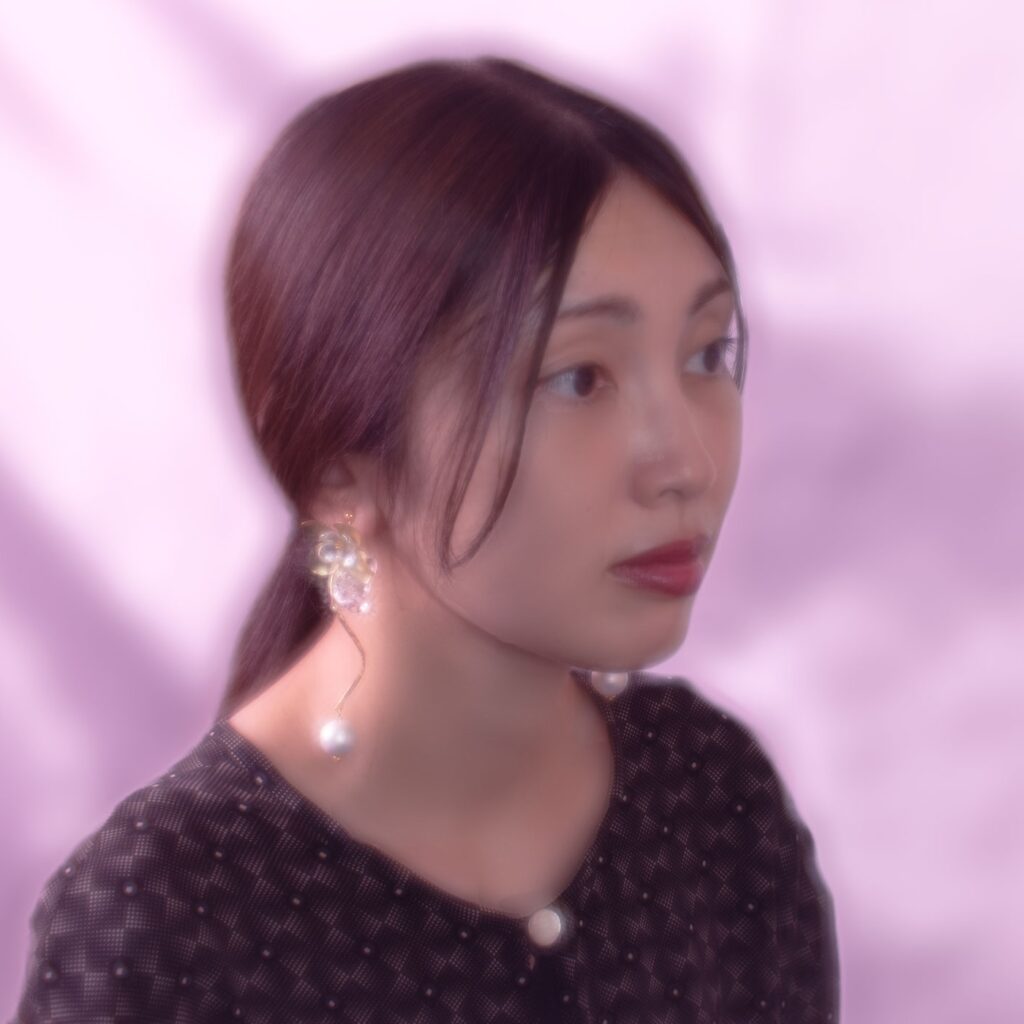Yui Taniguchi and Pau Waelder

An artist and VJ based in Tokyo, Saeko Ehara’s work is deeply influenced by kirakira, a Japanese term that can be translated as “sparkling” and defines a peculiar visual language. Glittering objects, flowers, and shiny clothing express joy and playfulness in Manga, popular culture, music, fashion, and contemporary art. It is one of the many ways in which Japanese artists overcome the distinction between “high” and “low” culture, by introducing elements from popular culture into their artworks and making them an integral part of their œuvre. Well-known artists such as Takashi Murakami or Yayoi Kusama have popularized this characteristically Japanese approach to contemporary art, which in Ehara’s work takes a new dimension in the form of immersive 3D animations, sometimes created from real environments and objects.
Saeko Ehara aims to inspire positive feelings and provide a space of contemplation and recovery through her kirakira artworks, gradually feeling the world with joyful visual experiences. Following the recent launch of her solo artcast Kirakira World, the artist shares with us some insights about her work and the creative process behind it.
Saeko Ehara. KiraKira Sweet Pink, 2022
Kirakira is a major aspect of your work. You state that it connects with your childhood and also with the experience of escaping from reality. Do you think that kirakira is about escaping reality? Is it a way to avoid the darkest aspects of everyday life by finding a safe and joyful space in a fantasy world?
Kirakira is not an escape from reality. For me, Kirakira represents the most primal sense of awe I experienced in childhood, and I want to share that feeling with the world through my work. I’m not expressing it to escape from painful experiences, but rather, I hope it serves as a source of encouragement and recovery for myself and for viewers when faced with difficulties.
“I hope that Kirakira serves as a source of encouragement and recovery for myself and for viewers when faced with difficulties.”
In terms of its visual appearance, kirakira heavily relies on sparkling effects and reflective textures. How does that translate into your work with 3D animation? Is it challenging? Do you need many resources to create the elements you look for? Please tell us a bit about the making of the artworks.
Before using AI, I mainly used TouchDesigner and Houdini to create 3D animations. I focused particularly on materials and lighting, learning through numerous tutorials. In Houdini, rendering transparency and reflections takes a lot of time, so completing a single piece would often take a long time.
Saeko Ehara. Crystal Flowers, 2022
Flowers are also a common element in kirakira aesthetics that can be found in your work. What do you find most appealing about using flowers as an element in your compositions? Which flowers do you like to depict? Are they more connected to Japanese and Asian cultures (such as lotus or almond blossoms) or to Western tradition (roses, poppies, daisies)?
Flowers are a universal presence that can be enjoyed by people regardless of nationality or race, and that’s what I find so appealing about them. When choosing flower types, I focus on their symbolism and their relationship to the place of exhibition. Recently, as I often focus on everyday life as a theme, I’ve increasingly been incorporating flowers that bloom in familiar surroundings.
“I like flowers because they are a universal presence that can be enjoyed by people regardless of nationality or race.”
You often collaborate with musicians in VJ sessions. Since your artworks have the ability to transport viewers to a different world, how do you combine that immersive experience with the music? Do these artworks have a different pace or rhythm compared to those you exhibit in gallery or museum shows?
VJ sessions often last 20 to 40 minutes, allowing for a deeper viewing experience than static exhibitions. I usually research the musician’s music in advance and align my expression with their rhythm and worldview. I also take into account the venue size and screen shape when creating the visuals.
Saeko Ehara. Dreamy Creatures, 2022
Given that your work often depicts fantastic worlds and immersive scenes, have you developed VR or AR pieces? If so, how would you compare the experience on the screen with that of a VR headset?
I’m not currently creating VR or AR works. Personally, I prefer screen-based experiences that anyone can enjoy without needing a headset or installing apps.
“Platforms like Niio, which connect with the world, are wonderful and feel like a big step toward realizing my vision.”
You have expressed interest in art history when working with AI. What do you find appealing about the art of the past? Which art styles or artists are you most interested in? Apparently you work mainly with references from Western art, have you explored traditional Japanese art too?
Both 3D animation and AI are stimulating, but right now I find myself especially drawn to working with AI models. AI allows for some control, but its greatest appeal is the unpredictability of the outcomes. In the beginning, I created many works that re-generated Western and Japanese art through AI. Recently, I’ve become more interested in the idea of how past artists might express themselves using today’s tools. I’m also exploring how to train AI using public domain works to discover new forms of expression.
Saeko Ehara. Flower Garden, 2024
What would be the next step of “making the world full of kirakira”? Would you like to create more installation work, or live performances, or maybe widely distribute your work, with Niio or other platforms?
Platforms like Niio, which connect with the world, are wonderful and feel like a big step toward realizing my vision. I believe it will take time to fill the world with Kirakira, but I want to cherish each opportunity and build slowly. That way, little by little, I hope to fill the world with Kirakira.
